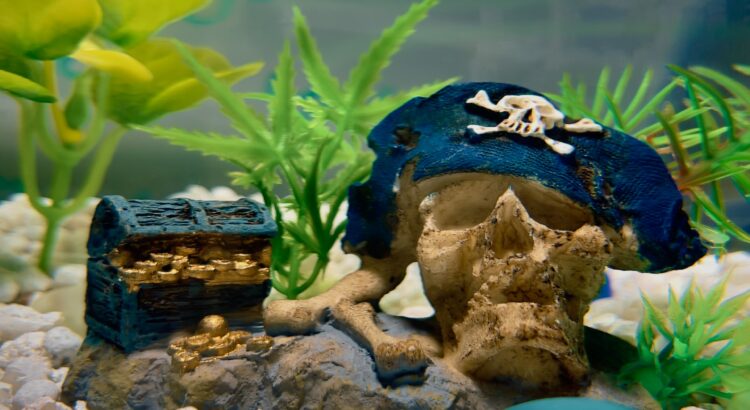Decorating your tank!
Decorating your tank is SO much fun… especially if kids get involved. You can go wild with decorating! Decorations are also important because it gives your good bacteria a place to grow when you’re setting up your tank. Just keep these tips in mind:
–No metal. Metal will start to degrade and can release harmful chemicals into the water. Baby snails and fish are especially sensitive to changes, and this could kill them.
–No Spongebob-themed stuff. I know! It’s a bummer. But lots of aquarium forums are reporting that there are a lot of Spongebob decorations made of toxic materials… and those toxins have wiped out entire aquariums causing heartache and the loss of hundreds (if not thousands!) of dollars.
–No random plants. Plants can carry bad bacteria and assassin snails. I like purchasing aquatic plants from an online store called Wet Plants. Of course, nothing is guaranteed, but I’ve purchased several times and never had a problem! They also have great customer service. If a plant dies really quickly, they’ll send you a new one. You can use fishing string or crazy glue to tie/glue plants to rocks to hold them in place. If you’re using glue, do NOT glue the stem. Only glue a single root. Plants are great because they act like a second filter and make your tank healthier!
–No new snails or fish without quarantine. This isn’t a decoration recommendation, but it’s still important. I’ve had my snails long enough that I know they don’t have a fungus or parasite problem. If you get new snails/fish from a different source, make sure to quarantine them in a separate tank to prevent the spread of disease!
–Substrate. You don’t need rocks or pebbles on the bottom of your tank! It’s actually easier to clean your tank without it. Of course, if you want to, you can add it! I would recommend something that’s not too sharp so it doesn’t hurt the snails.
–Plastic decoration: You can use toys as decorations! Just crazy glue rocks to the bottom to keep them from floating. Make sure the toys are relatively new. (Nothing from when we were growing up!) Newer toys that are made for kids (or, better yet, infants) are less likely to contain any chemicals that might leech into the water and hurt the snails. (No paper, cloth, stuff that will get icky)
–Wood decorations: Lots of people love using drift wood in their tanks! But don’t just use wood you got outside. Buy wood that’s specifically made for aquariums. If you REALLY want to use your own wood, Google how to clean it properly. I believe it needs to be boiled for a long while.
–Air stone: If there’s enough surface agitation, it’s not necessary to keep your snails and fish healthy, but it IS fun to watch the snails float and play in the bubbles!
Photo credit: JadonBarnes









